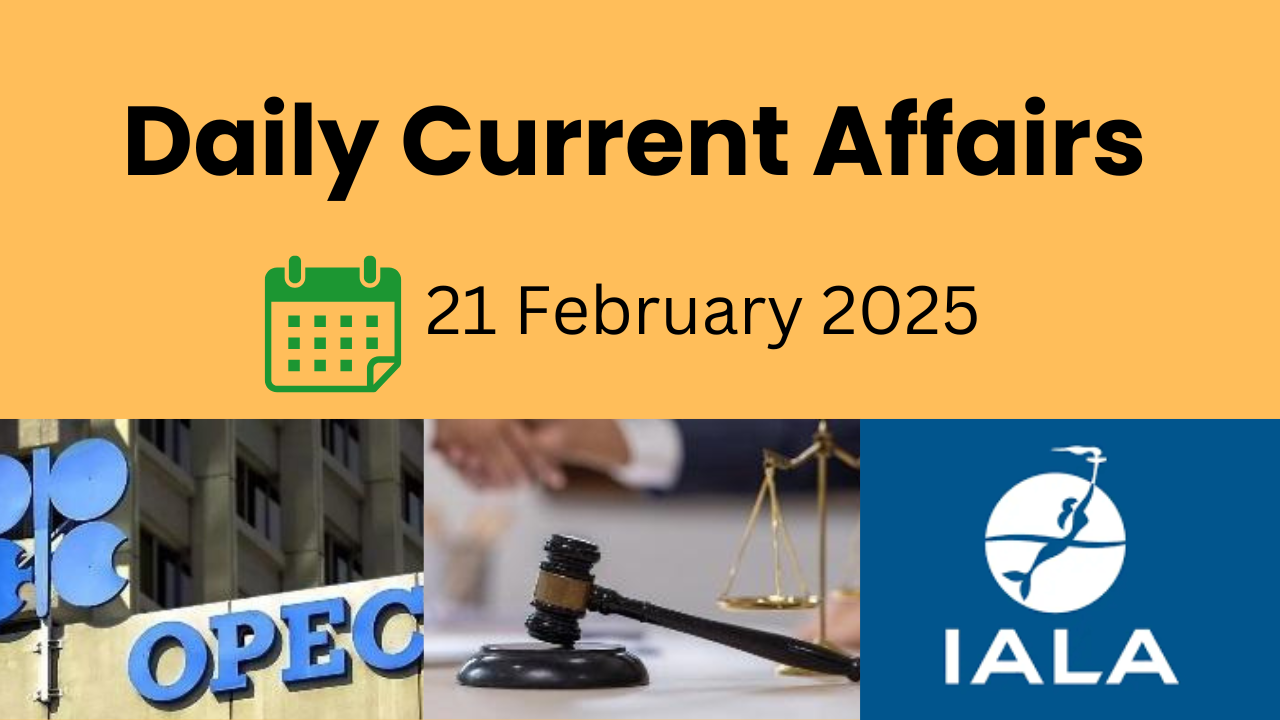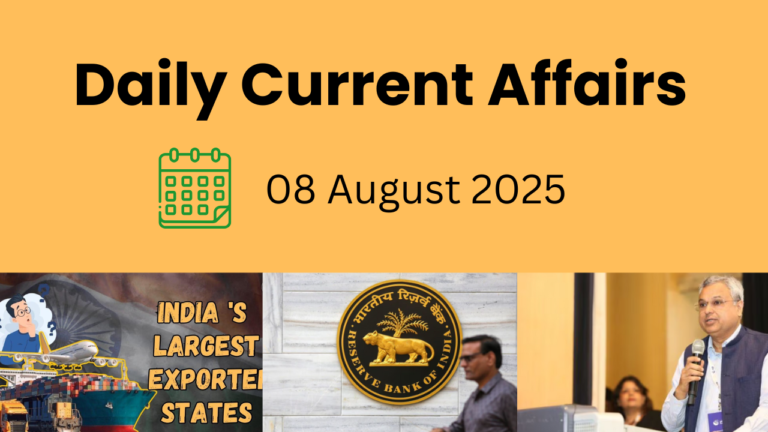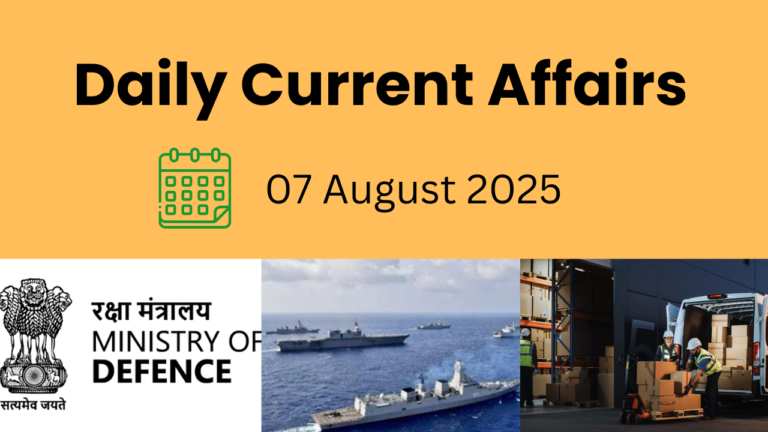1. Strengthening India’s Telecom Infrastructure: Key Lessons for Resilience
Context: The Coalition for Disaster Resilient Infrastructure (CDRI), a global initiative launched by Prime Minister Narendra Modi in 2019, recently released a report evaluating India’s telecom network preparedness in disaster scenarios. The findings highlight critical vulnerabilities and recommend strategies to ensure network resilience, power stability, and rapid recovery during emergencies.
Introduction:
India’s telecommunication infrastructure is a lifeline during disasters, ensuring seamless communication between emergency services, authorities, and the public. However, natural calamities such as cyclones, earthquakes, and floods often disrupt telecom networks, leading to severe communication breakdowns.
The CDRI report emphasizes the weak points in India’s telecom networks and suggests key measures to enhance their resilience against extreme weather events.
Why Resilient Telecom Infrastructure is Essential:
A robust telecom network is crucial for disaster management as it facilitates:
- Quick coordination between the National Disaster Management Authority (NDMA) and local authorities.
- Seamless communication between emergency responders and affected citizens.
- Efficient management of relief efforts by state and central governments.
However, telecom networks are highly vulnerable due to their dependence on power supply, overhead cables, and structural integrity. Any disruption can hamper rescue efforts and emergency response.
Major Challenges in Disaster-Prone Areas:
1. High-Risk Zones: Coastal & Seismic Regions:
- Undersea cables, which connect India to global internet networks, are particularly vulnerable in coastal regions.
- Cyclones and earthquakes can cause severe damage to telecom towers, leading to massive service outages.
2. Power Failures: A Major Concern:
- Telecom towers depend on an uninterrupted power supply, which is often disrupted during disasters.
- Prolonged blackouts delay network restoration, making it difficult for telecom operators to resume services swiftly.
3. Weak Infrastructure of Telecom Towers:
- Many towers are not designed to withstand high wind speeds, making them vulnerable in cyclone-prone areas.
- Overhead cables are prone to snapping during storms, leading to widespread network failures.
Strategies for Building Disaster-Resilient Telecom Networks:
1. Strengthening Power Supply for Telecom Sites:
- Ensuring continuous power at critical telecom locations.
- Maintaining fuel reserves for emergency use at telecom towers.
- Deploying solar or hybrid energy solutions to reduce dependence on the grid.
2. Reinforcing Telecom Towers:
- Upgrading tower designs to withstand stronger winds and seismic activity.
- Elevating backup power sources like diesel generators to prevent flood-related damage.
3. Transitioning to Underground Fiber Optic Networks:
- Overhead telecom cables frequently snap during extreme weather. The CDRI report recommends shifting to underground fiber networks for better durability.
- Implementing a “dig-once” policy, where underground cables are installed alongside other infrastructure, reducing repeated disruptions.
4. Enhancing Disaster Monitoring & Response:
- Real-time tracking of telecom assets using AI-powered monitoring systems.
- Efficient emergency fuel distribution to keep telecom towers operational.
- Strengthening collaboration between the Department of Telecommunications (DoT) and telecom operators for faster damage assessment and restoration.
5. Ensuring Financial Stability with Parametric Insurance:
- Parametric insurance can provide quick financial assistance to telecom operators after disasters.
- Faster compensation mechanisms ensure swift recovery and network restoration.
Roadmap for a Resilient Telecom Network in India:
Short-Term Goals (1-2 Years):
- Strengthening backup power systems at telecom sites.
- Implementing AI-driven real-time damage monitoring.
- Enhancing disaster-proofing in high-risk areas.
Medium-Term Goals (3-5 Years):
- Expanding underground fiber networks nationwide.
- Mandatory upgrades for telecom towers to meet disaster-resistant standards.
- Establishing a national coordination mechanism for telecom outages.
Long-Term Vision (Beyond 5 Years):
Achieving a 100% disaster-resilient telecom infrastructure.
Developing comprehensive policies for telecom disaster preparedness at national and state levels.
Promoting public-private partnerships to enhance investments in climate-resilient infrastructure.
Conclusion:
India’s telecom sector is vital for emergency response, yet it remains highly susceptible to natural disasters. The CDRI report highlights the urgent need for:
- Structural upgrades in telecom towers.
- Enhanced power stability at critical sites.
- Expansion of underground fiber networks.
- Stronger disaster coordination mechanisms.
By adopting these proactive measures, India can ensure minimal communication disruptions during disasters, enabling faster rescue operations and efficient crisis management.
2. Central Pollution Control Board (CPCB): Role, Functions & Latest Updates
Context: The Central Pollution Control Board (CPCB) has recently submitted a report to the National Green Tribunal (NGT), highlighting alarming findings regarding river water pollution in Prayagraj, Uttar Pradesh, during the ongoing Maha Kumbh Mela. The report underscores the need for urgent pollution control measures to ensure the cleanliness of river water during the grand religious gathering.
About the Central Pollution Control Board (CPCB):
The CPCB is a statutory body established in September 1974 under the Water (Prevention and Control of Pollution) Act, 1974. Later, it was also given powers and responsibilities under the Air (Prevention and Control of Pollution) Act, 1981.
Key Responsibilities of CPCB:
- It acts as a technical advisory body to the Ministry of Environment, Forests, and Climate Change under the Environment (Protection) Act, 1986.
- It plays a crucial role in monitoring, controlling, and preventing air and water pollution across India.
- It coordinates with State Pollution Control Boards (SPCBs) and provides guidance and conflict resolution in pollution-related matters.
- It has also delegated its powers and functions regarding pollution control in Union Territories to the respective regional administrations.
Key Functions of CPCB:
1. Water Pollution Control:
- Ensuring the cleanliness of streams, wells, and water bodies by controlling and preventing water pollution.
- Setting standards for effluent discharge from industries and municipalities.
- Preparing manuals and guidelines for the treatment and disposal of sewage and industrial effluents.
2. Air Pollution Control:
- Monitoring and improving air quality across India.
- Setting National Ambient Air Quality Standards (NAAQS) to regulate pollution levels.
- Laying down standards for emissions from various industrial sectors, vehicles, and power plants.
3. Policy and Advisory Role:
- Advising the Central Government on environmental policies and pollution control measures.
- Coordinating the efforts of State Pollution Control Boards and assisting in technical and legal matters.
Development of Environmental Standards by CPCB:
The CPCB is responsible for formulating and updating environmental standards to regulate pollution. Some of its key areas of standard development include:
1. Air and Water Quality Standards:
- National Ambient Air Quality Standards (NAAQS).
- Water Quality Criteria for different sources such as rivers, lakes, and groundwater.
2. Industry-Specific Emission and Discharge Standards:
- Regulations on industrial emissions and discharge of pollutants under the Environment Protection Rules, 1986.
- Minimal National Standards (MINAS) for various industries, specifying limits for effluent discharge, air emissions, noise levels, and solid waste disposal.
3. Waste Management Standards:
- Guidelines for the treatment and disposal of biomedical waste through incineration.
- Standards for emission and noise levels for diesel generators, LPG, and CNG generator sets.
Conclusion:
The CPCB plays a pivotal role in ensuring environmental sustainability by regulating air and water pollution, setting standards, and guiding policy decisions. The recent findings on river water pollution at Prayagraj highlight the urgent need for stricter pollution control measures. Strengthening the CPCB’s monitoring and enforcement mechanisms will be crucial for achieving cleaner air, water, and a healthier environment for future generations
3. Inauguration of Inland Waterways Terminal at Jogighopa, Assam
Context: The Union Minister of Ports, Shipping & Waterways recently inaugurated the Inland Waterways Terminal at Jogighopa, Assam. Strategically positioned near Bhutan and Bangladesh, this terminal plays a key role in enhancing bilateral trade and reinforcing India’s Neighbourhood First Policy.
Understanding Inland Water Transport (IWT):
What is Inland Water Transport?
Inland Water Transport (IWT) refers to the movement of goods and passengers via navigable rivers, canals, lakes, and other inland water bodies. It is an economical, efficient, and eco-friendly mode of transport.
Key Legislative Frameworks:
- Inland Waterways Authority of India Act, 1985
- Established the Inland Waterways Authority of India (IWAI) in 1986.
- Responsible for development, maintenance, and regulation of National Waterways (NWs).
- National Waterways Act, 2016
- Declared 111 inland waterways as National Waterways (NWs).
- Examples:
- NW-1: Haldia – Allahabad (Ganga-Bhagirathi-Hooghly River System).
- NW-2: Dhubri – Sadiya (Brahmaputra River).
- Inland Vessels Act, 2021
- Replaced the outdated Inland Vessels Act, 1917.
- Ensures harmonized regulations for safe navigation and operations of inland vessels.
Why is Inland Water Transport Important?
1. Strengthening the Logistics Sector:
- Cargo movement on National Waterways has witnessed significant growth in the last decade.
- Offers cost-effective and fuel-efficient transportation compared to road and rail networks.
2. Boosting the Tourism Industry:
- Inland waterways enhance river and cruise tourism.
- Initiatives like Cruise Bharat Mission aim to increase cruise passengers by 2029.
About Jogighopa Inland Waterways Terminal:
- Location: On the Brahmaputra River, Assam.
- International Trade Hub: Recognized as a Port of Call under the Protocol on Inland Water Transit and Trade (PIWT&T) between India and Bangladesh.
- Port of Call: A designated stopover point for vessels where ships can refuel, undergo repairs, or transfer cargo.
Conclusion:The Jogighopa Inland Waterways Terminal marks a significant step in strengthening India’s inland water transport network. By enhancing regional connectivity, boosting trade, and promoting sustainable transport, this terminal will play a crucial role in economic development and cross-border cooperation with neighboring countries.
4. CCI Releases Draft Regulations on Cost of Production
Context: The Competition Commission of India (CCI) has issued draft regulations aimed at refining the methodology for determining the cost of production in cases involving allegations of predatory pricing. These regulations seek to ensure a more transparent and effective approach to identifying anti-competitive pricing strategies.
What is Predatory Pricing?
Predatory pricing refers to the practice where businesses sell goods or services below the cost of production with the intent to eliminate competition from the market. Once rivals are forced out, the company may raise prices, leading to a monopolistic or dominant position.
Other Forms of Anti-Competitive Practices:
Apart from predatory pricing, businesses may engage in several other unfair trade practices to restrict competition:
- Price Fixing – Competitors collude to set prices at an artificially high level rather than competing fairly.
- Patent Misuse – Using patents to block market competition, such as acquiring patents just to file lawsuits against rivals.
- Collusive Bidding – Companies coordinate bids in government or large corporate tenders to manipulate contract outcomes.
- Tying and Bundling – Requiring customers to purchase one product only if they buy another, leveraging market power.
- Example: Microsoft Office, where products like MS Word and MS Excel are bundled together.
India’s Governance Framework for Fair Competition:
Key Legislations:
- Competition Act, 2002 – The primary law regulating anti-competitive practices, abuse of dominance, and mergers.
- Consumer Protection Act, 2019 – Protects consumer interests against unfair trade practices.
- Intellectual Property Laws –
- Patents Act, 1970 – Governs patent rights to prevent misuse.
- Copyright Act, 1957 – Ensures fair use and prevents monopolization of creative works.
Regulatory Institutions:
- Competition Commission of India (CCI) – The primary body enforcing anti-trust laws.
- Sectoral Regulators:
- Telecom Regulatory Authority of India (TRAI) – Regulates telecommunications sector.
- Securities and Exchange Board of India (SEBI) – Ensures fair practices in financial markets.
- Insurance Regulatory and Development Authority of India (IRDAI) – Oversees the insurance industry.
Conclusion:
The CCI’s draft regulations on cost of production are a step towards ensuring fair competition and preventing monopolistic practices. By strengthening enforcement mechanisms and upholding consumer interests, India is fostering a competitive and dynamic market ecosystem.
5. OPEC+ Welcomes Brazil as a New Member
Context: Brazil has recently secured approval to join OPEC+, solidifying its position as a key global oil player. This move reflects Brazil’s growing influence in the energy sector.
What is OPEC?
The Organization of the Petroleum Exporting Countries (OPEC) is a permanent, intergovernmental organization made up of major oil-exporting nations.
Key Facts About OPEC:
- Established in: 1960, Baghdad, Iraq.
- Founding Members: Iran, Iraq, Kuwait, Saudi Arabia, and Venezuela.
- Headquarters: Vienna, Austria.
- Current Members: Algeria, Congo, Equatorial Guinea, Gabon, Iran, Iraq, Kuwait, Libya, Nigeria, Saudi Arabia, United Arab Emirates, and Venezuela.
- Annual Meetings: Member nations convene to determine global oil production policies.
Objectives of OPEC:
- Regulating global oil supply and prices to ensure stability in the market.
- Coordinating petroleum policies among member countries.
- Ensuring a steady supply of petroleum to consumers.
- Providing fair returns on investment for oil producers.
OPEC Membership Criteria:
- Open to any country that is a significant oil exporter.
- Must share the common goals and principles of the organization.
What is OPEC+?
OPEC+ is an alliance between OPEC nations and additional oil-producing countries, including Russia.
- Formed in: 2016.
- Purpose: To extend oil production control beyond OPEC’s core members, allowing greater influence over global oil markets.
Why is Brazil’s Membership Significant?
- Brazil officially invited to OPEC+ in 2023.
- Currently the 7th-largest oil producer in the world.
- Produces 4.3 million barrels per day, accounting for 4% of global output.
- In 2024, crude oil surpassed soybeans as Brazil’s top export, making up 13.3% of total foreign sales.
Conclusion:Brazil’s entry into OPEC+ marks a strategic shift in the global oil market, reinforcing its rising influence in the energy sector. With its growing production capacity and expanding role in international oil trade, Brazil is set to play a pivotal role in shaping the future of global oil policies.
6. India Elected as Vice President of IALA
Context: India has been elected as the Vice President of the International Organization of Aids to Marine Navigation (IALA) during a meeting held in Singapore. This achievement further strengthens India’s role in global maritime safety and navigation.
About IALA:
The International Organization of Aids to Marine Navigation (IALA) is a leading global body dedicated to enhancing maritime safety and navigation systems worldwide.
Key Facts About IALA:
- Established in: 1957 as a Non-Governmental Organization (NGO) and a non-profit international technical association.
- Transition to IGO: In 2024, IALA changed its status from an NGO to an Intergovernmental Organization (IGO) after 34 countries ratified a convention.
- Formerly Known As: International Association of Lighthouse Authorities.
- Motto: “Successful Voyages, Sustainable Planet.”
Objectives of IALA:
IALA focuses on improving global navigation systems by:
- Enhancing and harmonizing aids to navigation worldwide.
- Ensuring the safe, efficient, and cost-effective movement of vessels.
- Encouraging environmental sustainability in maritime operations.
Membership:
- Total Members:200, including:
- 80 national authorities responsible for marine navigation.
- 60 commercial firms contributing to navigation technologies.
- India’s Membership: Since 1957, India has played an active role in IALA’s mission.
India’s Growing Role in IALA:
- Hosting the IALA Council Meeting in December 2025.
- Hosting the IALA Conference & General Assembly in September 2027, Mumbai.
Global Collaboration and SDGs Support:
IALA fosters cooperation among nations to:
- Develop standardized navigation aids across the world.
- Assist developing nations in adopting modern navigation technologies.
- Support the United Nations Sustainable Development Goals (SDGs) by promoting safer and more sustainable marine navigation.
Conclusion:
India’s election as Vice President of IALA is a major milestone in its maritime leadership. With its long-standing commitment to safe and efficient navigation, India is set to play a pivotal role in shaping the future of global marine transportation.




